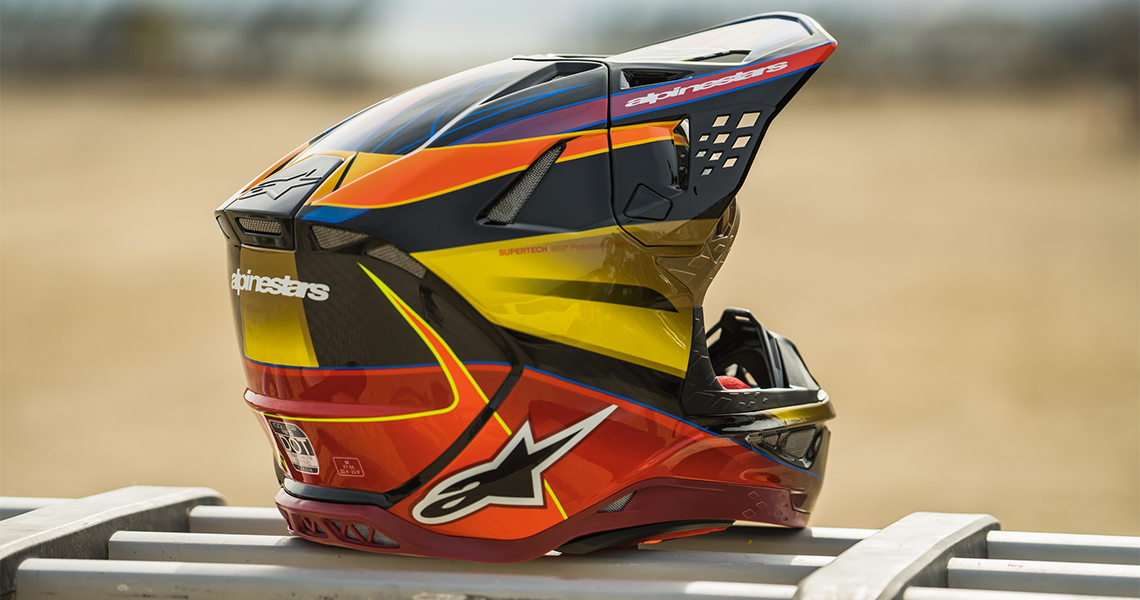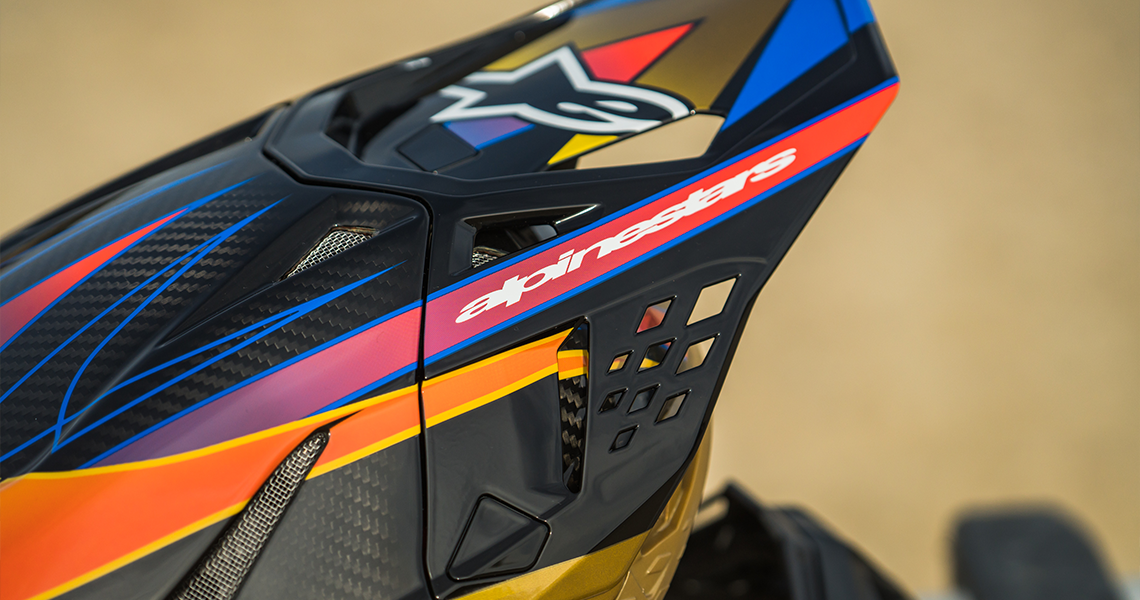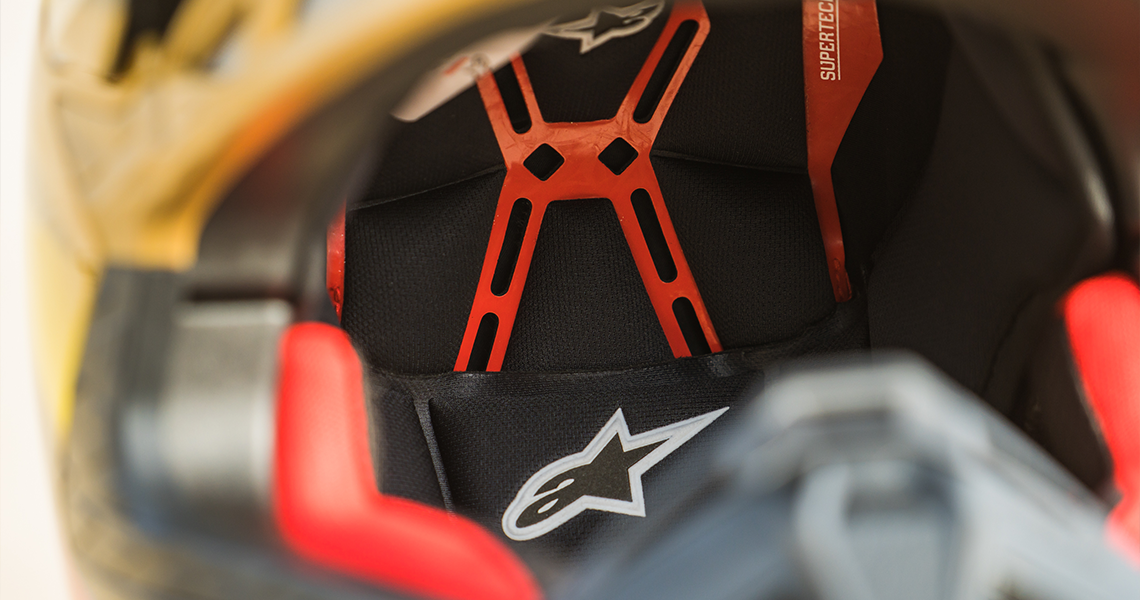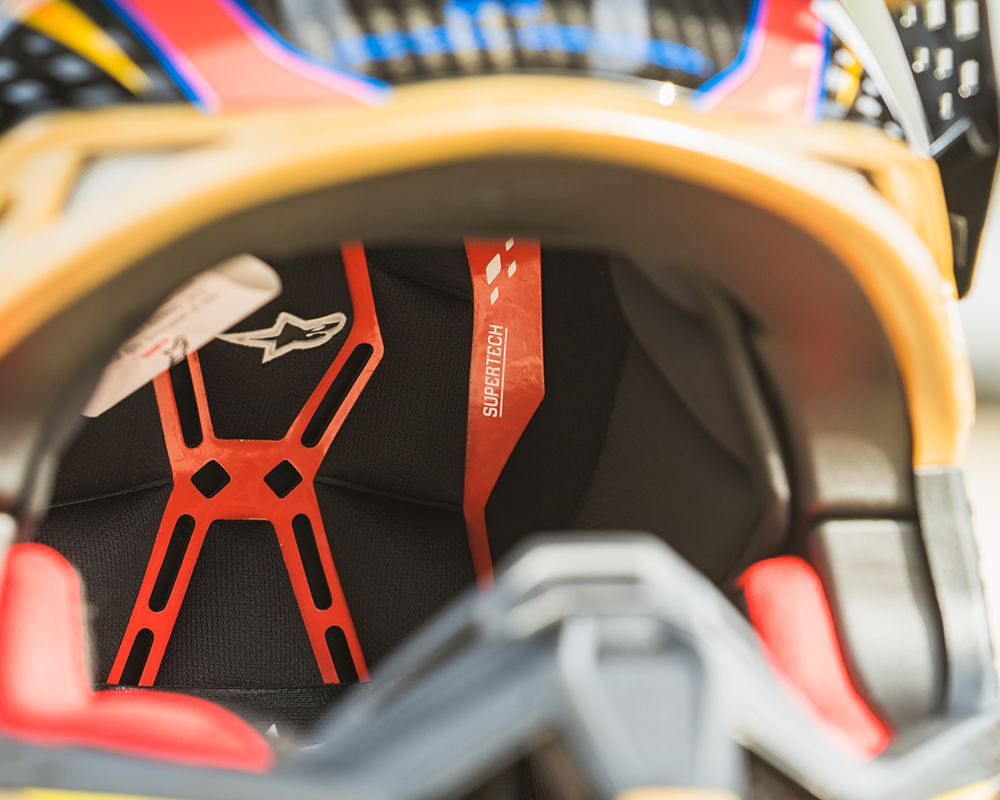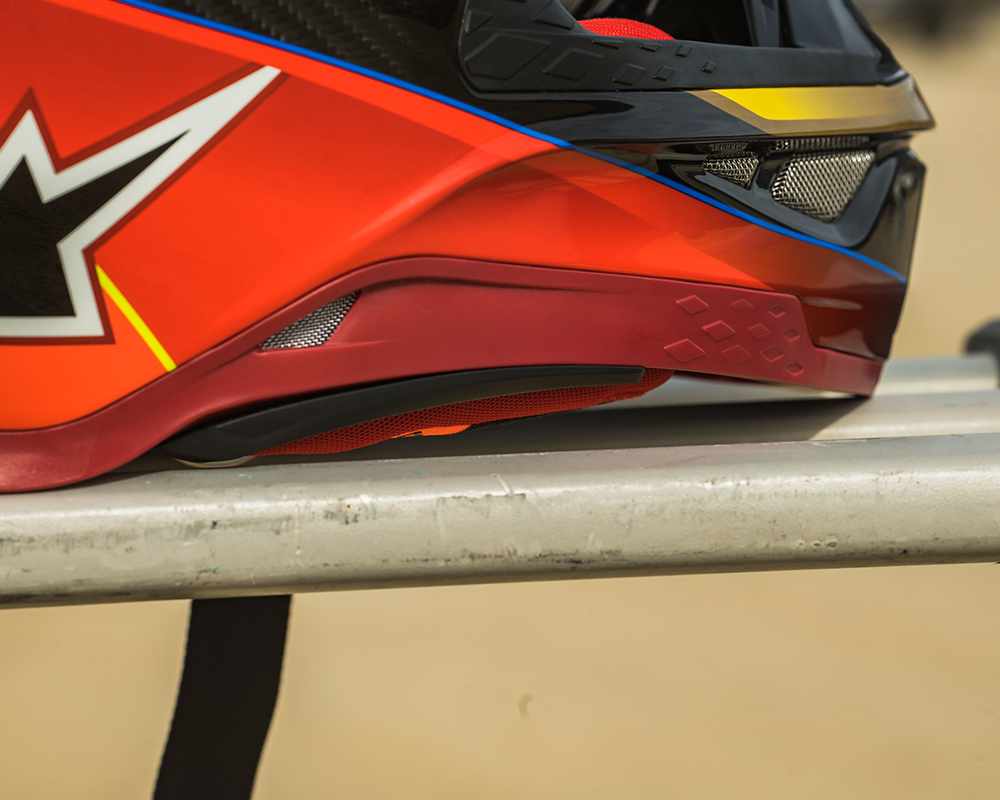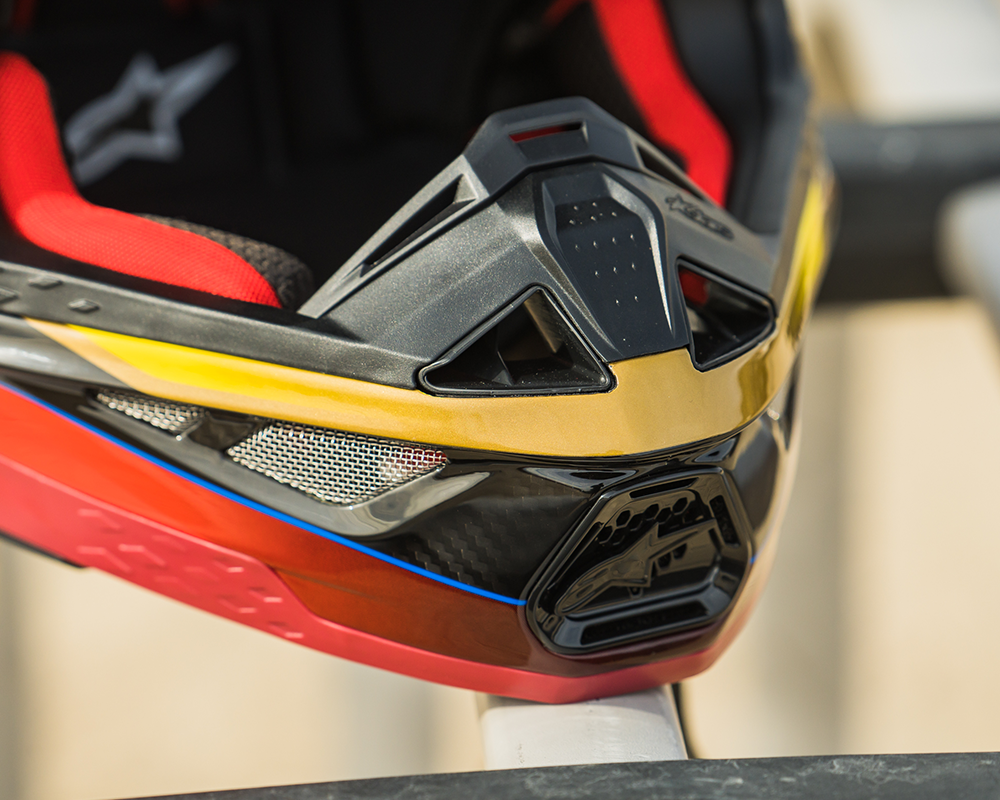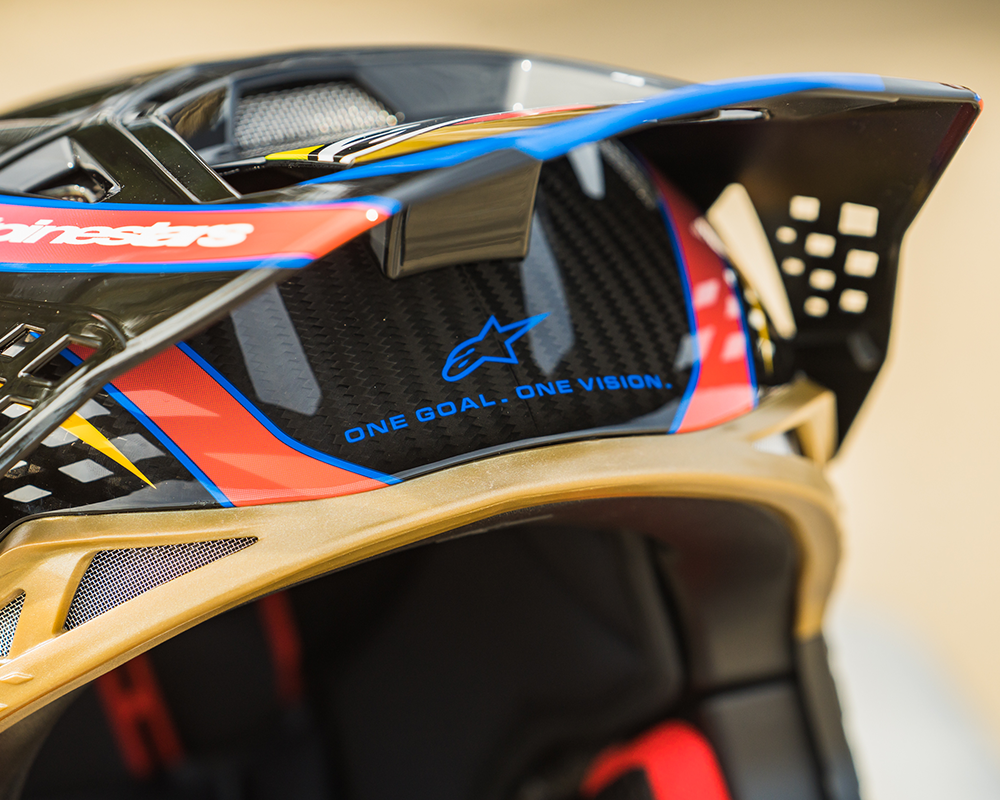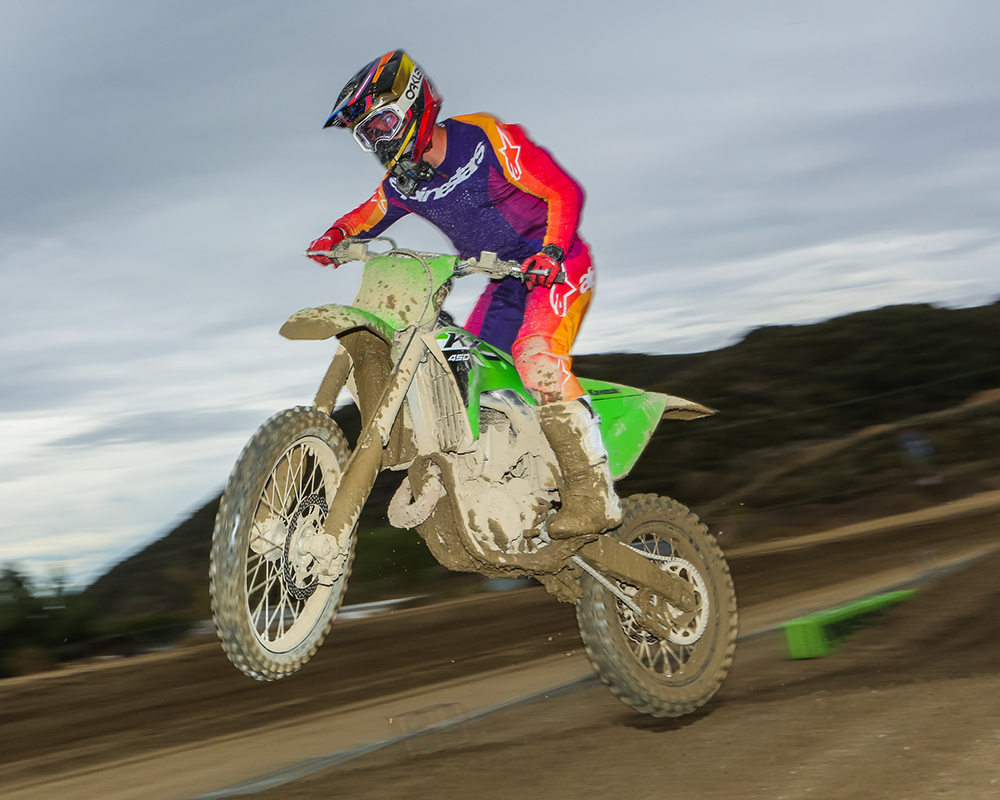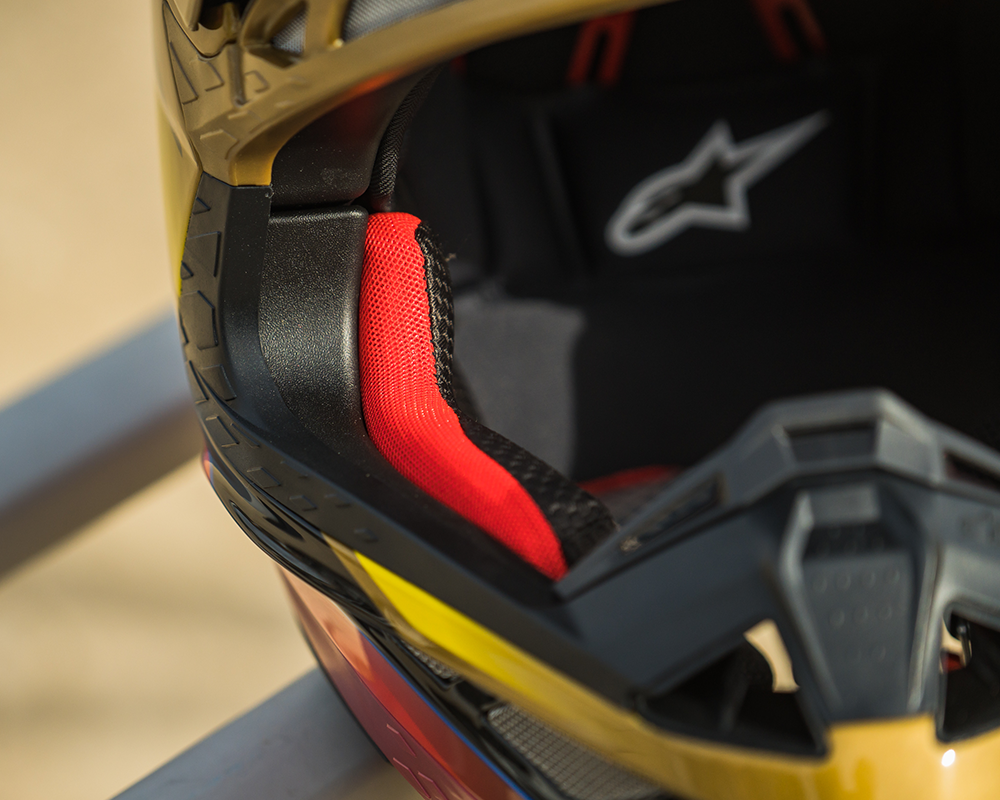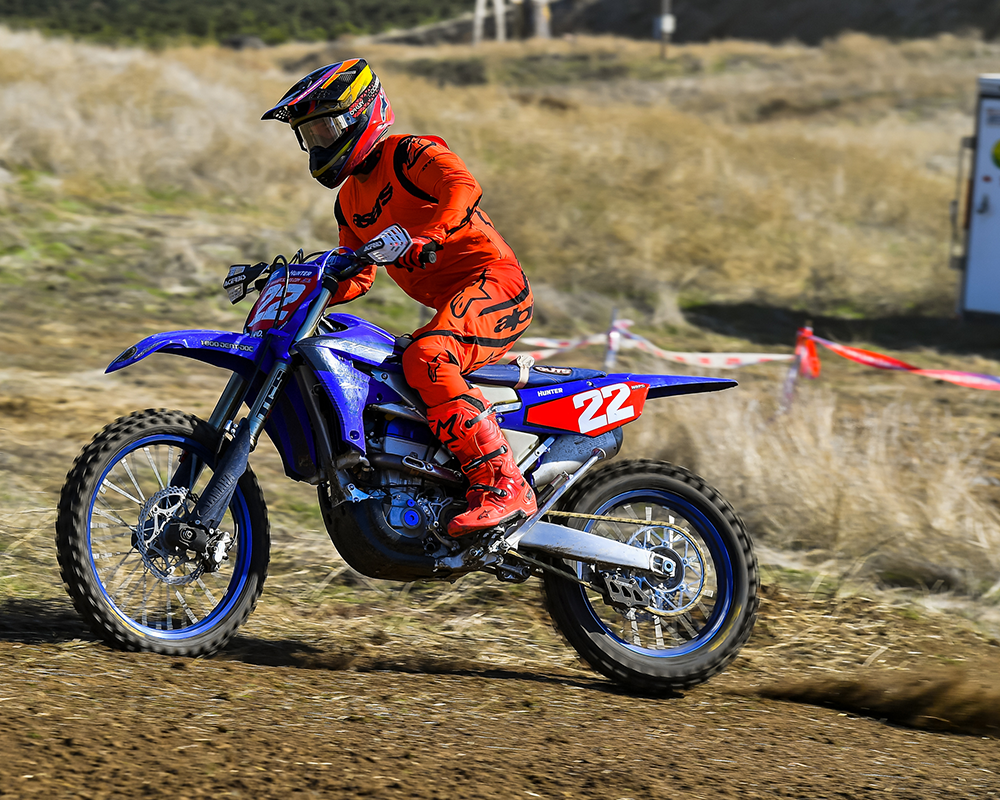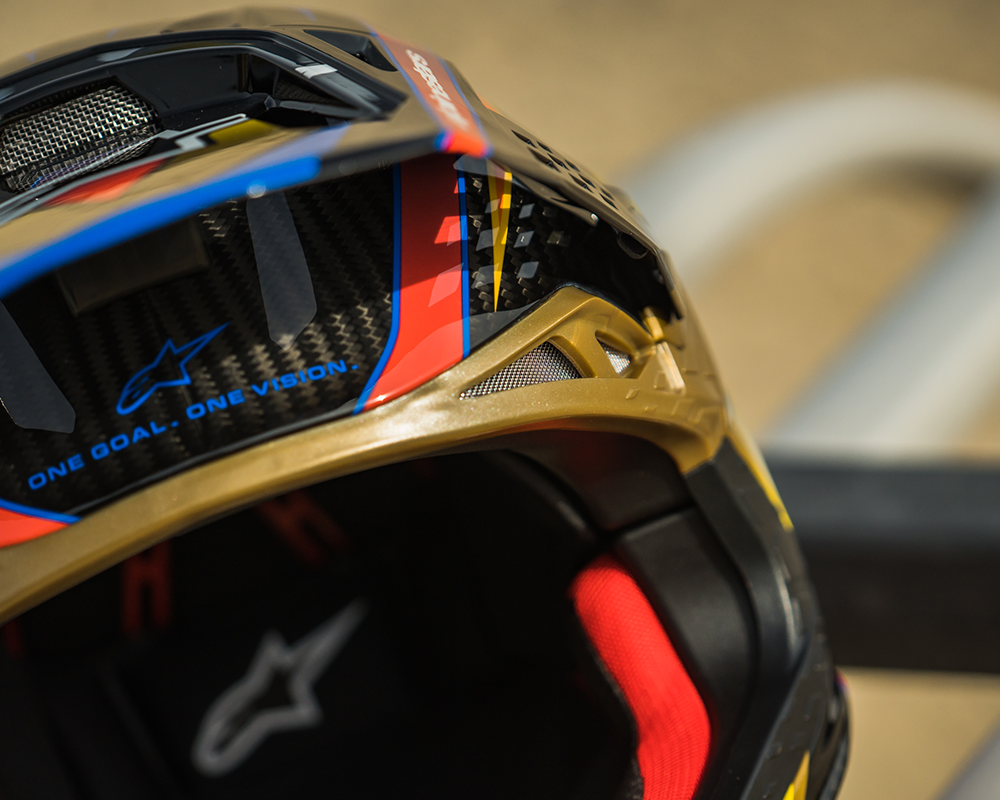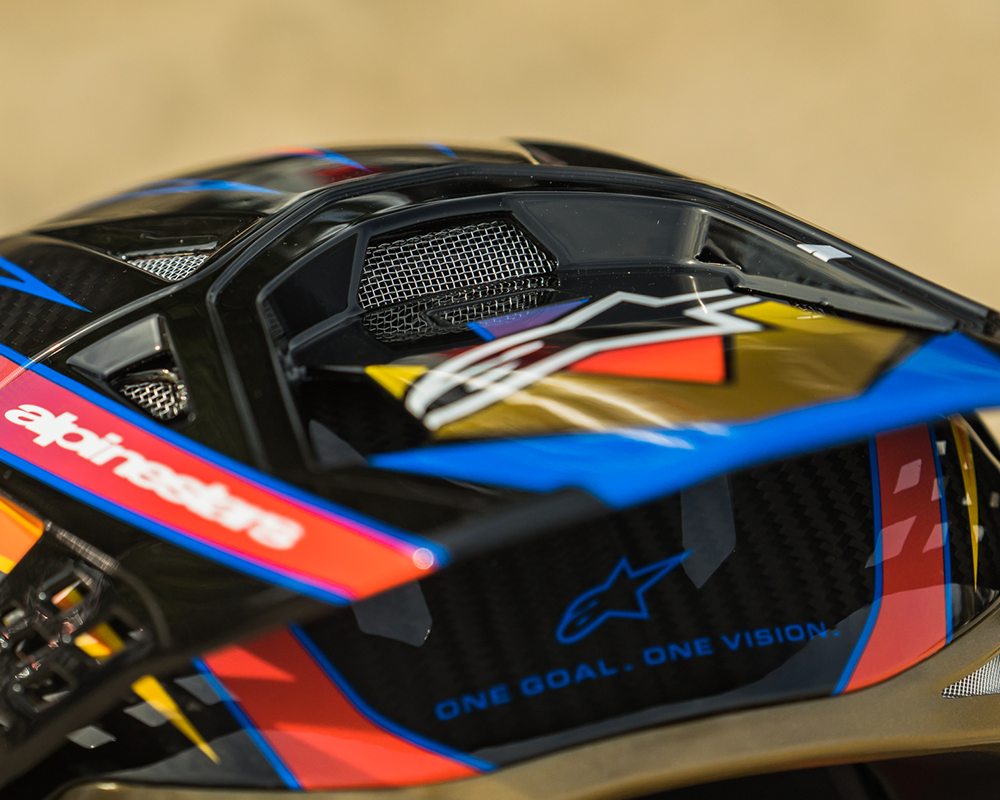Alpinestars Supertech M10 Helmet
Company: Alpinestars
Price: $649.95
Additional Pricing
- $715.95
- Very comfortable and light weight.
- Testers feel safe wearing the M10 helmet.
- Fit and finish is of high quality.
- An expensive investment in protecting your head.
What it is
- Aplinestars' premium off-road helmet offering.
- ECE, DOT approved.
Alpinestars is still fairly new to the off-road motorcycle helmet game, but over the past 5+ years they’ve become a main player in that arena. The “Alpinestars Protects” theme is more than apparent as they have a lot of new technology here and coming, and offer a vast variety of safety products, including helmets, to go along with their proprietary boots and gear lines. In 2024, Alpinestars made some updates to the M10 helmet.
The M10 helmet is their top-of-the-line helmet with a primary focus in protection. The secondary objectives are stated as “to engineer the perfect blend of excellent ventilation, unsurpassed comfort, and create helmets with the lightest weight possible, all without compromising on any other front.” The helmet shell is composed of a “3K high-density carbon outer later, a unidirectional carbon composite later, and an aramid fiber layer”
The main difference between the previous and new 2024 SM10 helmet design is the nose/mouth guard and chinbar, which has been re-profiled and brought in slightly to eliminate any sharper edges in favor of smoother lines to reduce the chance of catching and causing any sort of rotational force on the rider’s head and neck. Another change is the ability to attach a visor extension to protect from roost and sun glare, which attaches to the detachable helmet visor.
In 2024, ECE (one of the significant safety testing ratings on helmets) updated their standards to now be under the 22.06 banner, which the previous and new gen M10 helmets both fit under. The M10 is equipped with the MIPS system, a common sight across many premium helmets, which is designed to help reduce loads under rotational impacts.
For fitment, Alpinestars boasts the A-Head system offers the “ability to adjust both the height and angle at which the helmet sits on the head. With the micro-adjustable pad that is connected to the helmet inner EPS liner, the A-Head design allows for an ultra-specific setup that can be adapted to how deep the rider’s head sits in the helmet, as well as how far forward or back it is tilted.” The cheek pads are available separately in +/-5 mm increments to help further customize the fit, while each shell size is unique to its own size.
The helmet retails for $649.95+, comes in a variety of colors and with a spare visor and zippered helmet bag, and is available in sizes ranging from XS-2XL.
How it works
- Lightweight and comfortable shell design.
- Absorbs impacts and feels "safe"
The comfort of the M10 helmet is widely appealing and most of our test riders feel comfortable in the shell. In addition with the fit, the weight (or lack thereof) is noticeable and well received for two reasons. First, one of our theories with helmets is that a lighter helmet can be safer due to simple physics – Mass x Acceleration = Force. The lighter the helmet, the smaller that force number will be which equates to a weaker hit to the head. Also, the lightweight helmet is less strain on your neck and head when wearing all day, and we feel less fatigued in our neck after many miles on the bike.
We’ve had our fair share of crashes in the previous gen helmet over the years, and feel very safe wearing both the new and the old the M10. If there is a type of crash that we felt we “ring our bell” the most on in the old helmet, it is at slower speeds and under rotation. Think slow speed high sides where you knife the front end and go over with a direct impact to the head before the body. Not to say that we would’ve felt any better with any other helmet on, but these types or crashes in particular have been the only ones where we feel like we had a small impact to the head and possible slight concussion symptoms. Thus far, we have yet to feel any effects from a crash in the new helmet.
If we had a “gripe” with the helmet, it’s with the cheek pads in this helmet (and many others). The ERS (Emergency Release System) cheek pads are rather difficult to snap back in place after you remove them. Several other helmets have gone to this same system, and they are equally as difficult, so it's not an Alpinestars issue but rather a common nuisance with several helmets on the market. However, there is a safety aspect to it and we’d take the potential safety benefits and deal with the extra time it takes to install the cheek pads back in place.
The fit and finish of the helmet is what you’d expect from AStars. The helmet bag is practical yet appealing, the finish details of the helmet details are second to none. The visor release system is convenient, yet we have yet to lose one unlike their Supercross racers which is a plus. Ventilation is great, and we don’t find ourselves with grains of sand and dirt in our hair at the end of the day unlike with some other helmets out there. The sound levels are average – not overly quiet but not too loud.
Alpinestars’ M10 Helmet sits up there as one of the favorites amongst the DBT crew, and for a few of our riders, it’s their go-to helmet when the cameras are put away and comfort and safety are the top priorities. It fits well, is very light weight, and offers a safety factor that we trust. When first released years ago, we were unsure of the looks of the helmet, but the new-age design has grown on us. There are a few things you should never put a price tag on, and one of those is your head. While the helmet is expensive, like many others, cost should be no factor when it comes to protecting your head.
Leave a Reply
